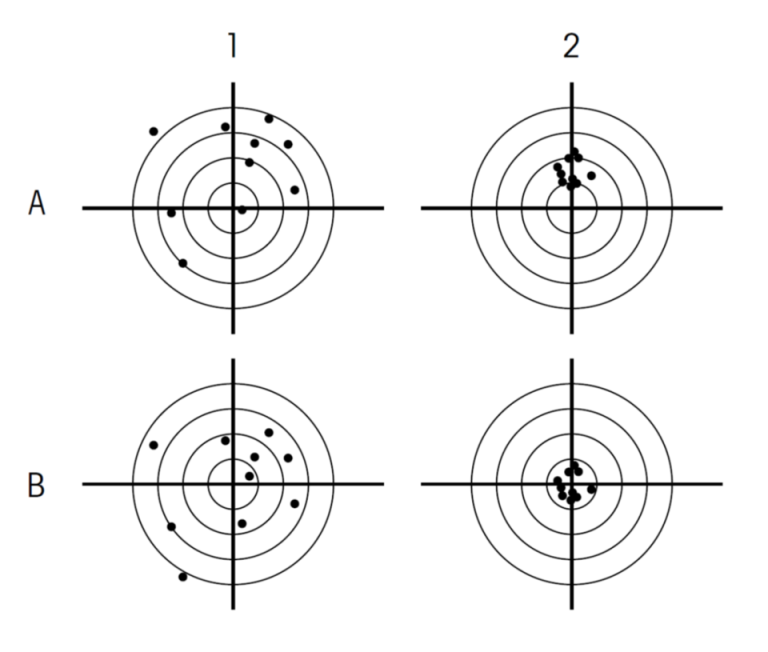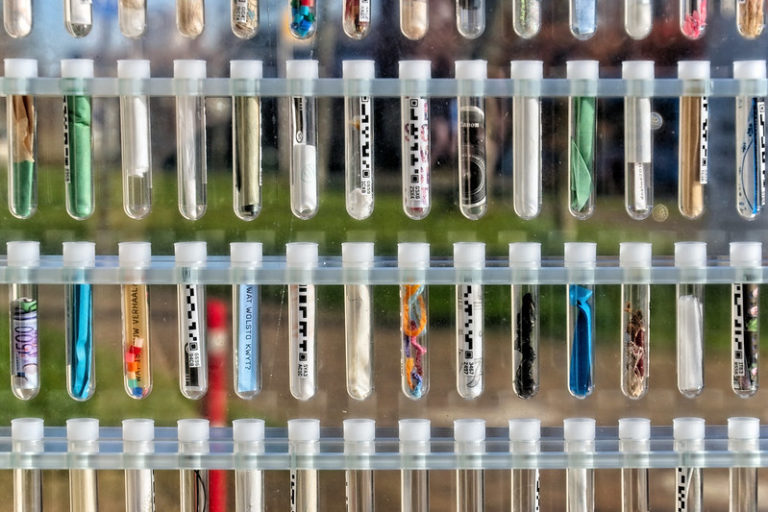WIPO opens more widely the door to biopiracy
Adopted on May 24, 2024, after nearly 25 years of negotiations, the WIPO Treaty on Intellectual Property, Genetic Resources, and Traditional Knowledge aims to regulate the use of natural and cultural resources through mandatory disclosure of origin in patent applications. While intended to ensure fair benefit-sharing, loopholes in the disclosure requirements allows circumvention, raising concerns about the potential legitimization of biopiracy.

Understanding the absence of any obligation to disclose the origin of the material on which a patented “invention” is based is one of the keys to understanding the ongoing strategy of appropriation of living organisms by a few multinationals. In the field of patents, Inf’OGM has chosen to publish an article shedding light on a World Intellectual Property Organization (WIPO) treaty adopted in 2024. It is provided by K.M. Gopakumar, a legal advisor at the Third World Network (TWN) who has been following WIPO negotiations for many years. This legal insight may seem technical, but it is essential for understanding the inner workings of an international text presented as guaranteeing the effective protection of “genetic resources”i.
For 25 years, discussions have occurred in WIPO among countries to establish a common legal instrument aiming at protecting the genetic resources and the associated traditional knowledge. Those talks occurred while in the same time, genetic sequences were subject to digitization, feeding more and more private and public databases. One of the key question to be answered was to know whether or not the geographic origin of the genetic resource is to be provided when claiming a patent on genetic sequences of this resource. A key question indeed as, without this information, countries will lack a possibility to counter possible biopiracies. The answer arrived in may 2024 when the WIPO adopted its new treaty.
A mandate given in 2000…
On 24th May 2024, the World Intellectual Property Organisation’s Diplomatic Conference adopted the Treaty on Intellectual Property (IP), Genetic Resources and Traditional Knowledge (the Treaty)ii. The adoption of the Treaty concluded nearly 25 years of deliberations within the Intergovernmental Committee (IGC)iii, which was established in 2000 by the WIPO General Assembly to discuss IP issues in the context of traditional knowledge, traditional cultural expressions and genetic resources (GR). In 2009, the mandate provided by WIPO General Assembly to the IGC was to lead text-basediv negotiations “with the objective of reaching agreement on a text of an international legal instrument (or instruments) which will ensure the effective protection of GRs (genetic resources), traditional knowledge and traditional cultural expressions.” Thus, the text-based negotiations led to the development of three different draft legal instruments out of which only one has been adopted by the Diplomatic Conferencev, the one on Genetic Ressources
Mandatory Disclosure and Benefit Sharing Under the Treaty
The adopted Treaty aims to check the misappropriation of genetic resources and traditional knowledge through patents. To this end it imposes legal obligation to the disclosure of the country of origin or source by the patent applicant while seeking patents on inventions based on GR and TK. The rationale for the mandatory disclosure regime is to enable countries especially those who are parties to the Convention on Biodiversity (CBD)vi or Nagoya Protocolvii to fulfill their obligations on equitable benefit sharing. The disclosure requirements of the source of GRTK or its country of origin would help the national biodiversity authorities. They could verify whether the patented invention on GRTK is obtained in compliance with the requirements of the biodiversity legislation on accessing GR and the associated TK such as prior informed consent. In the absence of such disclosure, the patent holder could escape from the benefit-sharing obligations, especially in foreign territories. Currently, there are around 35 national/regional legislations containing mandatory disclosures. The Treaty was expected to provide a minimum normative standard for the disclosure regime and sanctions in case of failure to disclose.
The objective the Treaty has missed
How far the Treaty provisions achieve their primary purpose of complimenting the national and international access and benefit-sharing (ABS) regime ?
TheArticle 1 sets out the following objectives of the Treaty. “(a) enhance the efficacy, transparency and quality of the patent system with regard to genetic resources and traditional knowledge associated with genetic resources, and (b) prevent patents from being granted erroneously for inventions that are not novel or inventive with regard to genetic resources and traditional knowledge associated with genetic resources.”. Thus, the suggested objectives of the Treaty are to enhance the efficacy and transparency of the patent system related to GRs and associated TK, and to prevent “erroneous” grant of patents on GR and associated TK, which are not novel and inventive. The text thus ignores the very purpose of the Treaty i.e., and clearly formulated in the mandate given to the IGC, to reconcile the gap between the CBD and IP regime and to facilitate the effective implementation of benefit sharing from the utilization of GR and associated TK.
As mentioned, both CBD and Nagoya Protocol obligate parties on benefit sharing emanating from the utilization of GR and associated TK. But International IP legal instruments allow the IP holder to monopolize the benefits without creating any obligation to part the benefits with people who conserve GR and TK. The earlier version of the draft treaty explicitly mentioned the reconciliation between the CBD regime and IP regime. Towards this purpose, the first objective mentioned in the earlier negotiating text stated: “Ensuring mutual supportiveness with international agreements relating to the protection of genetic resources and/or traditional knowledge associated with genetic resources and those relating to IP”viii.
A blur line about DSI
The treaty makes the mandatory disclosure of GR, TK and its origins. Article 2 provides the following definition of GR. “Genetic resources” are genetic material of actual or potential value”. The definition of genetic material states: “Genetic material” means any material of plant, animal, microbial or other origin containing functional units of heredity”. Thus, the definition of genetic materials could be interpreted to exclude the digital sequence information (DSI) from the scope of the definition of genetic resources. As a result, the mandatory disclosure requirements under the Treaty could apply only to inventions based on the physical forms of the genetic material. Such an interpretation would drastically reduce the application of disclosure requirements only to those patent applications based on the physical genetic resources that fall within the scope of the Treaty. However, most of the GR-based patents are using DSI instead of the physical forms of genetic materials and therefore emerging as a new form of biopiracyix. There is nothing in the Treaty that prevents a party from making mandatory disclosure of the source of DSI. However exclusion of DSI from the scope of the Treaty would seriously undermines the effectiveness of the Treaty to achieve its purpose of complementing the ABS regime.
Disclosure of information ? Only if possible
The trigger for the mandatory disclosure is set by Article 3 of the Treaty. This article establishes when the patent applicant has to disclose the country of origin or the source of GRTK to the patent office. According to this Article whenever a claimed invention in a patent application is based on GR or TK the applicant has to disclose the country of origin of the genetic resources or, if he doesn’t know the country of origin, the source of the genetic resources.
Article 2 of the Treaty defines the term “based on”, which states: “Based on” means that the genetic resources and/or traditional knowledge associated with genetic resources must have been necessary for the claimed invention and that the claimed invention must depend on the specific properties of the genetic resources and/or on the traditional knowledge associated with genetic resources”. Thus, the disclosure becomes mandatory only upon satisfaction of two conditions. First, GR and/or ATK must have been necessary for the claimed invention. Second, the claimed invention must depend on the specific properties of the genetic resources and/or on traditional knowledge associated with genetic resources. As a result, one could argue that disclosure requirements would be applicable only when the patent claim is linked to GR. There is no need to make the disclosure when the patent specification contains the GR used in the invention but is not part of the patent claim. This narrow scope of the trigger for the disclosure requirement allows parties to avoid derivatives from the scope of mandatory disclosure. For instance, an active ingredient separated from GR and further produced by synthetic methods could be excluded from the disclosure regime. There are many natural product derivative patents in the pharmaceutical and agrochemical fieldsx. Nagoya protocol defines a derivative as “a naturally occurring biochemical compound resulting from the genetic expression or metabolism of biological or genetic resources, even if it does not contain functional units of heredity”.
The following provisions under Article 3 further compromise the effectiveness of the disclosure. First, paragraph 3 allows the patent applicant to not make any disclosure by making a declaration “affirming that the content of the declaration is true and correct to the best knowledge of the applicant”xi. Similarly, according to Para 5, parties cannot oblige the national patent offices to check the content of the disclosurexii. The legal prohibitionxiii against the verification of disclosure made by the patent applicant seriously affects the invoking of sanctions in case of nondisclosure or wrongful disclosure.
Any sanctions, just in case ?
What would happen if this fragile obligation to disclose the geographic origin was not respected ? The treaty undermines the capacity of countries to act. Its Article 5 limits the freedom of countries to revoke the patent in case of failure to disclose only on the grounds of fraudulent disclosure. Para 3 of Article 5 prohibits parties to “revoke, invalidate, or render unenforceable the conferred patent rights solely based on an applicant’s failure to disclose the information specified in Article 3 of this Treaty”. Para 4 provides the exception to Para 3 and states that “Each Contracting Party may provide for post-grant sanctions or remedies where there has been fraudulent intent in regard to the disclosure requirement in Article 3 of this Treaty, in accordance with its national law.” This means that parties have the freedom to revoke the patent only in the case of a disclosure with fraudulent intent. A strict interpretation of this provision means a patent cannot be revoked merely because of a wrongful or non-disclosure. It can be revoked only if there is proof on fraudulent intent. Proving the fraudulent intent creates a burden of proof on the part of authorities and makes the revocation of the patent extremely difficult. This drastically reduces the effectiveness of sanctions. One way to overcome this is that national law can introduce the concept of presumption of fraudulent intent in case of wrongful disclosure or non-disclosure. In other words, national law can state that non-disclosure or inaction on the wrongful disclosure after a reminder from the Patent Office could be presumed to be a fraudulent act and result in the revocation of patent.
Database on GR and Associated TK
Article 6 of the treaty states: Contracting Parties may establish information systems (such as databases) of genetic resources and traditional knowledge associated with genetic resources, in consultation, where applicable, with Indigenous Peoples and local communities, and other stakeholders, taking into account their national circumstances”. The plan to establish such a database could expose the Gr and associated TK to the danger of biopiracy in the base of safeguards. However, the Parties of theTtreaty have the freedom to develop a database on GR and associated TK and there is no obligation to do so. Further, it also provides the freedom to Parties to make the database available to the patent office for search and examination with appropriate safeguards.
What links with the Patent Cooperation Treaty ?
Patent Cooperation Treaty (PCT) is an international agreement to facilitate the filing of patent applications in multiple countries, which are parties to PCT through a single patent application. Currently, 157 countries are party to PCT. Though PCT allows the filing of patents in multiple countries through a single application, the grant of a patent is subject to the substantive patent examination under the national patent law. Hence and does not guarantee the grant of patents in all countries filed through PCT. The application of the treaty provisions in the PCT context is doubtful.
Article 27(1) of the PCT rules that ‘no national law shall require compliance with requirements relating to the form or contents of the international application different from or additional to those which are provided for in this Treaty and the Regulations’. Therefore, the application of mandatory disclosure to PCT application is doubtful. Since a large number of applications are through the PCT route many applicants may use the PCT route to bypass the disclosure requirements. To address this issue a footnote to Article 7 i.e. dealing with the relationship with other international agreements states: “The Contracting Parties request the Assembly of the International Patent Cooperation Union to consider the need for amendments to the Regulations under the PCT and/or the Administrative Instructions thereunder with a view towards providing an opportunity for applicants who file an international application under the PCT designating a PCT Contracting State which, under its applicable national law, requires the disclosure of genetic resources and traditional knowledge associated with genetic resources, to comply with any formality requirements related to such disclosure requirement either upon filing of the international application, with effect for all such Contracting States, or subsequently, upon entry into the national phase before an Office of any such Contracting State”. There are two hurdles to implementing the proposal in the footnote. First, the CoP of the Treaty needs to reach a consensus and the conference of parties is to take place only after entry into the force of the treaty. Second, there is no guarantee that the PCT Assembly would accept the proposal from the CoP. Therefore there is no assurance that the disclosure requirement could apply to patent applications filed through the PCT route immediately after the entry of the Treaty.
The original purpose of the Treaty was to address the gap in the patent law, which allows the patent holder to enjoy the statutory monopoly on the invention without even parting the benefit that emerged from the utilization of GR and associated TK. Nearly 25 years of deliberations and negotiations led to the conclusion that the Treaty had not succeeded in creating an effective disclosure regime to achieve its original purposes. On the contrary, the treaty sets norms, which provide various loopholes for the patent applicant to bypass the disclosure requirements and undermine the ABS regime. Thus, the treaty bears the danger of legitimizing the biopiracyxiv.
i Annick Bossu et Christophe Noisette, « « Ressource génétique » : une mauvaise expression », Inf’OGM, le journal, janvier/mars 2021(in french).
ii WIPO, « Diplomatic Conference to Conclude an International Legal Instrument Relating to Intellectual Property, Genetic Resources and Traditional Knowledge Associated with Genetic Resources – Geneva, May 13 to 24, 2024. WIPO TREATY ON INTELLECTUAL PROPERTY, GENETIC RESOURCES AND
ASSOCIATED TRADITIONAL KNOWLEDGE », May 24, 2024.
iii WIPO, « Intergovernmental Committee on Intellectual Property and Genetic Resources, Traditional Knowledge and Folklore (IGC) ».
iv TWN, « TWN Info Service on Intellectual Property Issues (Oct09/01) », 6 October 2009.
v WIPO, « Diplomatic Conference to conclude an International Legal Instrument Relating to Intellectual Property, Genetic Resources and Traditional Knowledge Associated with Genetic Resources », May 13 to May 24, 2024.
vi CBD, « The Convention on Biological Diversity ».
vii Secretariat of the Convention on Biological Diversity, « Nagoya Protocol on Access to Genetic Resources and the Fair and Equitable Sharing of Benefits Arising from their Utilization », 2011.
viii WIPO, « Intergovernmental Committee on Intellectual Property and Genetic Resources, Traditional Knowledge and Folklore Fortieth Session. Geneva, June 17 to 21, 2019. CONSOLIDATED DOCUMENT RELATING TO INTELLECTUAL PROPERTY AND GENETIC RESOURCES », April 9, 2019.
ix Sara Dal Monico, « A New Horizon in Biopiracy Trends? Preliminary Considerations on Digital Sequence Information on Genetic Resources », OpinioJuris, 3 January 2024.
x US6069146 : example of a patent in which halimide is an aromatic alkaloid isolated from the fermentation of a marine fungus, Aspergillus sp. CNC139, which was collected in the waters off the Philippine Islands and has been deposited with the American Type Culture Collection as Accession No. 74434, date deposited Apr. 10, 1998 (Rockville Md.). Halimide is a diketopiperazine composed of two amino acid residues and represents the first cytotoxic molecule having anticancer activity discovered from this Aspergillus sp. As disclosed herein, the compounds of the invention, including halimide and derivatives thereof, can reduce or inhibit the progression of cells through mitosis of the cell cycle and, therefore, can reduce or inhibit cell proliferation and cell viability.
xi Article 3 point 3.3
xii Article 3 point 3.5
xiii National offices remains “free” to conduct such a verification but no legal obligation can be put on them to do so.
xiv Edward Hammond, « Biopiracy Watch – A compilation of some recent cases », Vol. 1, 2013.












